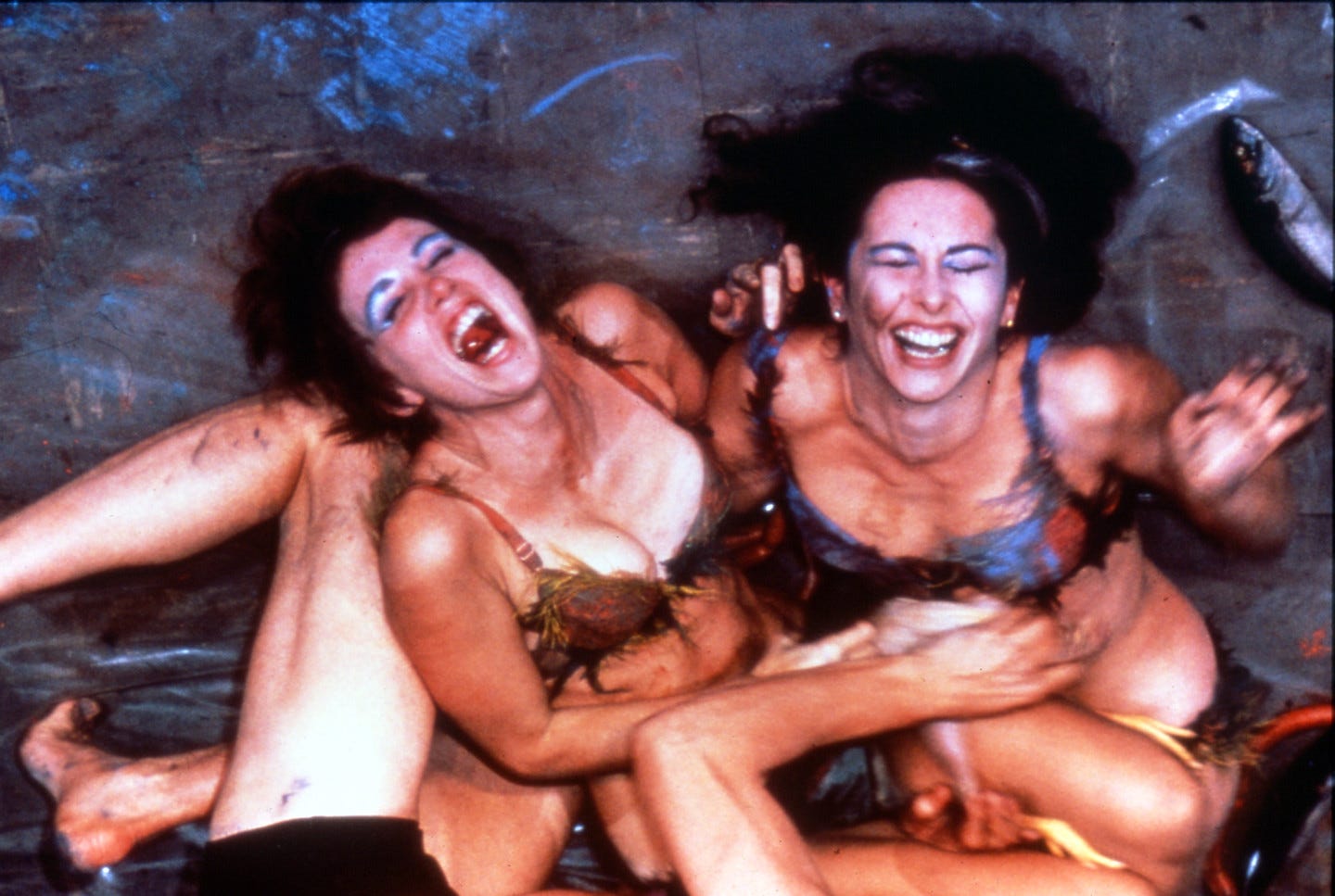“When a woman (creates a nude self-portrait), it is trivialising the aesthetic, but when a man does it, it is part of his heroic domain or domination of subject” —Carolee Schneeman
In the late 1950s, Carolee Schneeman (b. 1939, Philadelphia) was kicked out of Bard College for painting herself in the nude with her legs spread. Nevermind that she often posed in the nude for male painters at the school, including her own boyfriend, who submitted works wherein she had sat, naked, as the model. Nevermind that the female nude was omnipresent within the history of art. There was something downright offensive about her choice to paint her own female body. “When a woman (creates a nude self-portrait), it is trivialising the aesthetic, but when a man does it, it is part of his heroic domain or domination of subject,” Schneeman pointed out.
Soon, Schneeman found herself in a rented, previously industrial space on 29th street in New York City, committed to becoming a painter. At some point she became aware of the Judson Church, downtown, whose minister, Reverend Moody, had decided to make his place of worship an open environment for avant garde artists, establishing a gallery at the church that held exhibitions of painters like Robert Rauschenberg, even before he was well known in the art world.
In 1962, Moody started allowing dance and musical performances at his church and artists such as Yoko Ono, Merce Cunningham and Trisha Brown held shows there for the community. Schneeman proposed to Moody that she start staging her own performances, related to happenings, coining the term kinetic theatre to describe the bridge between dance and art performance that she hoped to build. “Kinetic theatre is my particular development of the “happenings”– which had mainly evolved in New York over the past ten years,” she later explained. “I work with untrained people and various waste materials of technology to realize images which range from the banal to the fantastic…My pieces are characterized by physical contact between a core of performers and an expanding physical relationship to the environment and audience.”
One example of these early performances is Meat Joy, 1964, where a group of eight performers covered in paint, paper, and paint brushes writhed together, playing with raw fish, meat, and poultry. These materials combined with the performers’ nudity “exposes and confronts a social range of current cultural taboos and repressive conventions,” described Schneeman. Meat Joy was also inspired both by Scheeman’s childhood in the country, in constant contact with nature, decay, death, and rebirth, and her relationship to the body and its excesses as understood through her father, a rural doctor. To capture the ecstatic, unbridled performance, she utilized film and photography and in 1977 made a book devoted to the work, as well as an art piece acquired by MoMA that included a movie of her performance set to pop music.

“The culture was starved in terms of sensuousness because sensuality was always confused with pornography. The old patriarchal morality of proper behavior and improper behavior had no threshold for the pleasures of physical contact,” Schneeman said. Her work aimed to overthrow these conventions. She loved that the smells of the raw fish and meat lingered for weeks after these performances; additionally, there was something fitting about Moody delivering his sermons on the Loaves and the Fishes, as if in response to these sacred and profane odors.
Schneeman would go on to make a series of similar performances at Judson Church through 1967. It wasn’t just that Schneeman thought of her performances as a way to make her painting practice three-dimensional—she also thought of them as a way for her to make the creativity and energy specific to the female body, due to its vulva, accessible to others. Vulvic Space, she called it. “I thought of the vagina in many ways – physically, conceptually: as a sculptural form, an architectural referent, the source of sacred knowledge, ecstasy, birth passage, transformation... the source of conceptualizing, of interacting with materials, of imagining the world and composing its images,” she wrote.
The cunt speaks! —Eileen Myles
In 1975, at an art gallery in East Hampton, Schneeman performed perhaps her most notable work, Interior Scroll. She entered the gallery, took her clothes off and covered herself in two sheets, stood on top of a table, dropped the sheets, painted her body with dark pigment that looked like mud, and assumed some poses traditionally made by nude live-painting models. Then, she started to pull a thin scroll from her vagina. She finished by reading from the scroll, inch by inch. About a decade later, she explained that what she had read was a letter to the film critic and art historian Annette Michelson, who had refused to watch or teach Schneeman’s performance and film works—as if she was using what she considered to be her very essence as a woman to speak back to the powers that be. As Eileen Myles wrote in the catalogue for Schneeman’s 2023 exhibition at the Barbicon in London… “the cunt speaks!”
Schneeman died of breast cancer in 2019 in New Paltz, New York.






Thank you Sarah!